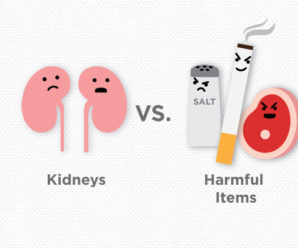You want to improve your heart health and strength, but don’t know the best exercise for heart health.
Is it in the gym or at home? Cardio or weight lifting? Thirty minutes of jogging or pumping free weights?
“First of all it shouldn’t be a battle between resistance training and cardio,” said Mitzi Alikpala, cardiology nurse practitioner at Marshfield Clinic Health System. “In fact, these two exercises combined contribute to a healthy heart lifestyle.”

Alikpala says neither workout outweighs the other but rather, complements it. Aerobic exercises will get your heart pumping and improve your circulation. Endurance exercises improve optimal oxygen intake and decrease the heart stiffness.
A body in motion stays in motion
Regular exercise training is a good regime for preventing heart failure because of a sedentary lifestyle, which is lifestyle involving little or no physical activity.
“Sedentary lifestyle itself can decrease the left ventricle’s elasticity, the chamber of the heart responsible for propelling oxygenated blood to the rest of the organs,” Alikpala said. “The problem is when compliance decreases and muscle stiffens, the left ventricle ends up being under-filled, resulting in a decrease in cardiac output, and on worse cases, even causes pulmonary hypertension and severe heart failure.”
American Heart Association has recommended at least having 150 minutes per week of moderate intensity activity, and Mitzi strongly agrees.
“The more we refrain from prolonged sitting, the more we save ourselves from falling into the sedentary lifestyle,” she said. “Soon enough, with each attempt to increase your activity, you will notice a higher endurance and you’ll be able to increase the amount and intensity of your cardio exercises. Strengthening exercises like ‘weight training’ or ‘resistance training’ serves its purpose, too.”
Build muscles and improve your heart
Alikpala said resistance training focuses more on body composition by reducing the fat and generating a leaner muscle mass thereby preventing obesity, metabolic syndrome and high cholesterol – risk factors for cardiovascular disease.
“With lifting weights, you can gain more muscles to help burn more calories,” she said. “Having more muscles means having that musculoskeletal foundation to facilitate your moderate-intensity aerobic exercises.”
Safety first, keep it simple
Bottom line, Alikpala said, is that when you combine endurance training and resistance training, you lower the cardiovascular disease risk factors.
“If you have multiple comorbidities or other chronic conditions, it is wise to seek out your provider’s advice regarding your new workout routine,” she said. “Remember, safety first.”
Alikpala added that you would not be able to reap the benefits of exercises if you injure yourself. Talk to your provider to find out what is best for you.
“It is never too late to start exercising,” she said. “A simple change in your routine incorporating at least five-10 minutes of brisk walking a day and at least one-two days a week of resistance training will make a difference.”
Exercise for heart health to keep you healthy for years to come
Run, dance, swim, golf, hike or do yoga.
“Do what you love,” Alikpala said. “The most important thing is to start it and stick with it.”
Dedicated exercise training in middle age can reverse some of the consequences of diseases like hypertension or more serious diseases like heart failure as you age.
To learn more about the benefits of exercise, talk a Marshfield Clinic Health System provider.
Schedule an appointment Message your provider
Related Shine365 articles
Check yourself: Use good form to get the most out of your workouts
Strength and conditioning: Something for everyone







Leave a Reply